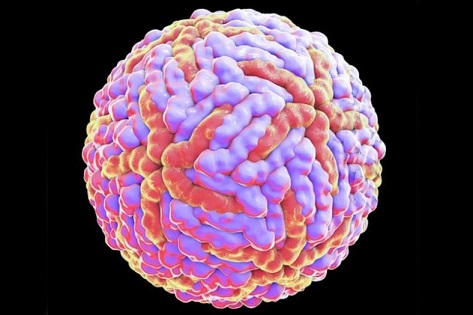Nikhil Prasad Fact checked by:Thailand Medical News Team May 28, 2024 10 months, 4 weeks, 5 hours, 52 minutes ago
Medical News: Central and South America are currently facing a significant health challenge with the outbreak of Oropouche fever. This viral infection, transmitted by mosquitoes and midges, is impacting both rural and urban communities across the region. The Pan American Health Organization (PAHO) has issued an epidemiological update highlighting the presence of the virus in Brazil, Colombia, Ecuador, French Guiana, Panama, Peru, and Trinidad and Tobago. The virus's spread and the response efforts provide critical insights into managing vector-borne diseases in tropical regions.
 Central And South America Facing An Oropouche Fever Outbreak
Central And South America Facing An Oropouche Fever Outbreak
Thailand
Medical News has previously warned about the growing threat of the Orupouche virus in our previous coverages and we also strongly believe that it is behind some of the reported sporadic clusters of mysterious diseases being witnessed in parts of Asia and even Southern Europe in the last 12 months, where it is now spread to as well.
https://www.thailandmedical.news/news/breaking-oropouche-virus-makes-a-resurgence-22-cases-in-bolivia-possibly-behind-rise-in-unexplained-fevers-and-platelet-dips-in-india
https://www.thailandmedical.news/news/oropouche-virus-infections-caused-by-mosquitoes-and-midges-rising-in-bolivia-peru-chile-brazil-and-elsewhere-in-americas
A Closer Look at Oropouche Fever
Oropouche fever is caused by the Oropouche virus (OROV), an arbovirus from the Bunyaviridae family. The disease primarily affects humans through the bite of Culicoides paraensis midges and Culex quinquefasciatus mosquitoes. First identified in Trinidad and Tobago in 1955, the virus has since caused several large-scale epidemics in the Amazon region and beyond.
The symptoms of Oropouche fever typically appear after an incubation period of five to seven days. They include fever, headaches, muscle and joint pain, and occasionally vomiting and diarrhea. Although the symptoms are usually mild and resolve within a few days, the disease can significantly impact communities, particularly during large outbreaks.
The Current Outbreak: Statistics and Geographic Spread
In 2024, PAHO reported 5,193 confirmed cases of Oropouche fever in Bolivia, Brazil, Colombia, and Peru. The outbreak's distribution varies by country, with Brazil and Bolivia experiencing new cases in previously unaffected areas.
Bolivia
As of epidemiological week (EW) 18 in 2024, Bolivia reported 1,856 suspected cases, with 313 confirmed through real-time RT-PCR tests. The majority of cases were in La Paz, Beni, and Pando departments, with a significant proportion of
infections among females aged 30-39.
Brazil
Brazil reported 4,583 confirmed cases between EW 1 and EW 18 of 2024. The Amazon region, particularly the states of Amazonas, Rondônia, Acre, Pará, Roraima, and Amapá, accounted for the majority of cases. Notably, autochthonous transmission was also identified in non-Amazonian states like Bahia, Espírito Santo, and Piauí.
Colombia
In Colombia, 38 confirmed cases were detected in the departments of Amazonas, Caquetá, and Meta. The highest proportion of cases was among males aged 10-19.
Peru
Peru reported 259 confirmed cases across the departments of Loreto, Madre de Dios, Ucayali, and Huánuco. Most cases were in males aged 30-39.
Epidemiological Surveillance
The Pan American Health Organization emphasizes the importance of intensified surveillance for the timely detection and management of Oropouche fever cases. Given its clinical similarity to other vector-borne diseases like dengue, laboratory diagnosis is essential for accurate identification and outbreak monitoring.
Clinical Diagnosis and Management
Oropouche fever typically presents with high fever, headache, myalgia, arthralgia, and sometimes rash. In severe cases, the virus can cause meningitis or encephalitis. There is no specific treatment for the disease; management focuses on symptom relief and supportive care.
Laboratory Diagnosis
Laboratory confirmation involves molecular methods like RT-PCR to detect viral RNA in serum samples. During the acute phase, viral isolation can be performed, although it is primarily a research tool. Serological methods, such as ELISA, can detect antibodies from the fifth day of symptoms.
Genomic Surveillance
The Oropouche virus has a segmented genome, making it prone to genetic reassortment. This phenomenon contributes to the virus's diversity and the emergence of new strains. Genomic surveillance helps track these changes and informs public health responses.
Prevention and Control Measures
Effective control of Oropouche fever relies on reducing vector populations and minimizing human exposure to vectors. Key strategies include:
-Strengthening entomological surveillance to detect potential vectors.
-Mapping areas with conditions conducive to vector development.
-Promoting good agricultural practices to eliminate breeding sites.
-Implementing personal protective measures, such as using mosquito nets and repellents.
-Conducting insecticide spraying in outbreak areas when necessary.
Historical Context and Impact
Historically, Oropouche fever has caused significant public health challenges in the Amazon region. Large outbreaks, such as the one in Belém, Pará, in the 1980s, affected thousands of people. Despite its impact, the disease often goes underreported due to its clinical similarity to other febrile illnesses and the lack of widespread diagnostic capabilities.
Notable Epidemics
In Brazil, Oropouche fever is the second most common viral disease after dengue. Over the years, it has caused over half a million cases, with notable epidemics generating more than 263,000 cases between 1978 and 1980 alone.
Challenges in Diagnosis and Treatment
Diagnosing Oropouche fever can be challenging due to its nonspecific symptoms, which overlap with other arboviral infections like dengue. PCR testing, while accurate, is expensive and not always readily available in affected regions. As a result, many cases are diagnosed based on clinical symptoms, which can lead to misdiagnosis and underreporting.
Research and Future Directions
Recent research has focused on understanding the virus's pathogenesis and improving diagnostic methods. Studies using murine models have provided insights into the virus's neurotropism and its ability to cause encephalitis. Further research is needed to develop specific treatments and vaccines for Oropouche fever.
Conclusion: Addressing the Outbreak
The current outbreak of Oropouche fever in Central and South America underscores the need for robust public health measures to manage vector-borne diseases. Intensified surveillance, effective vector control, and public education are crucial in preventing the spread of the virus. As the region grapples with this emerging threat, coordinated efforts by health authorities and the community will be essential in mitigating the impact of Oropouche fever.
For more updates about the Oropouche Fever Outbreak, keep on logging to Thailand
Medical News.
Read Also:
https://www.thailandmedical.news/news/scientists-warn-of-human-threat-from-novel-hantavirus-newly-found-in-urban-bats-of-the-czech-republic
https://www.thailandmedical.news/news/breaking-mystery-disease-outbreak-in-zamfara-nigeria-kills-13-and-infects-over-500-who-alerted
